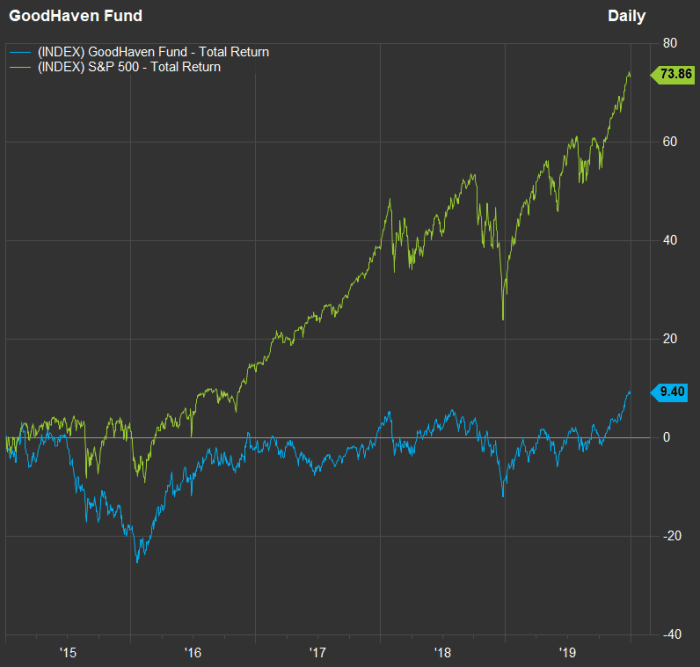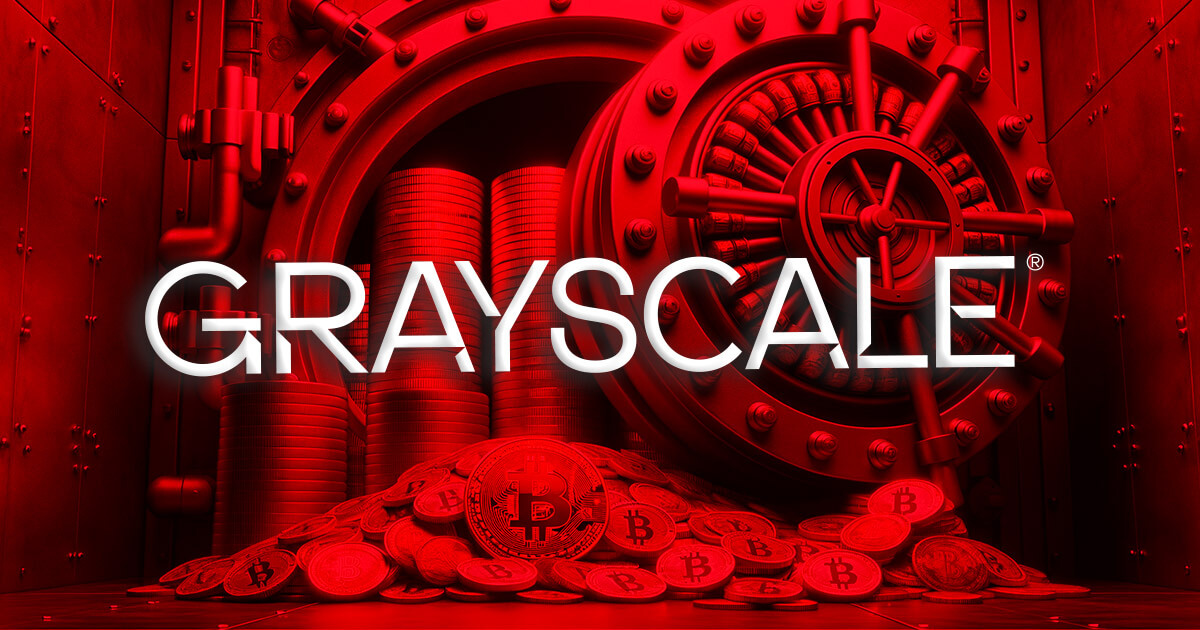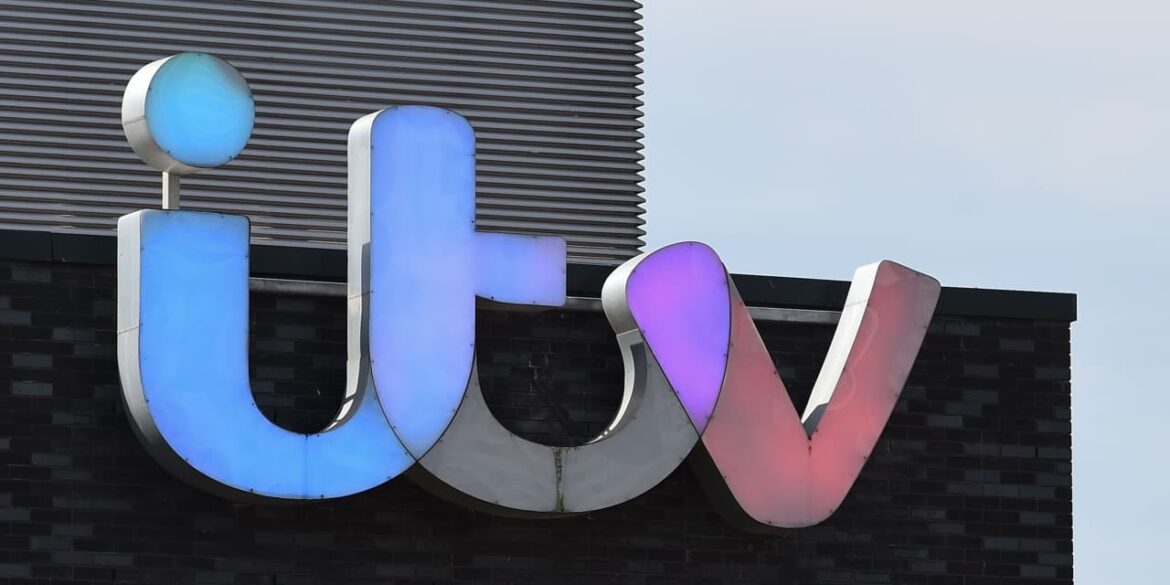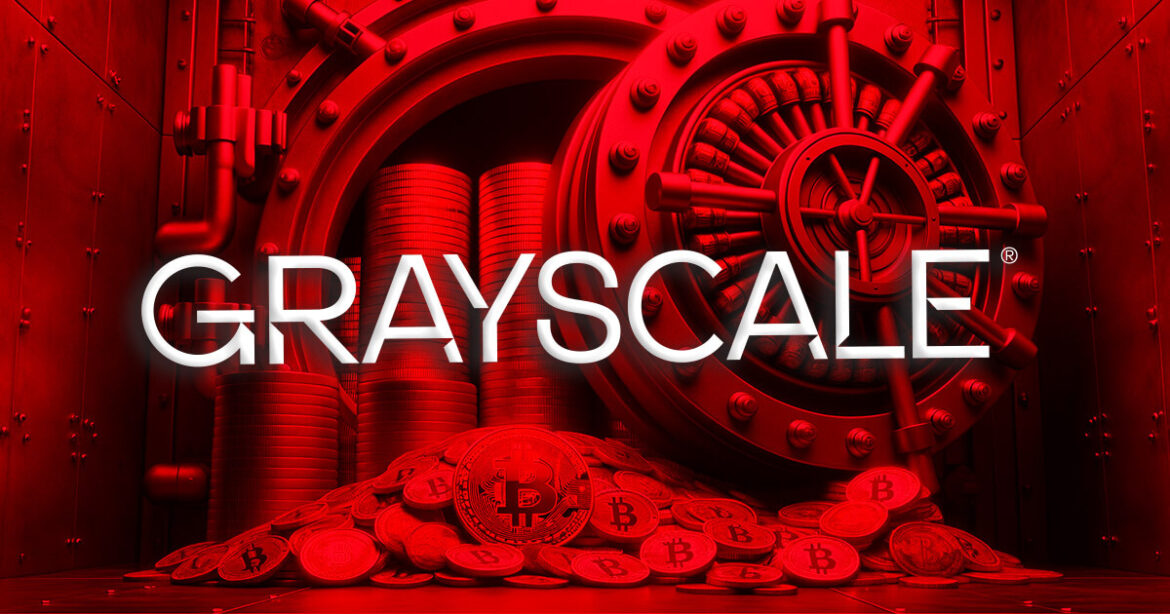 A proposal aiming to contribute to funding the legal defense of the developers of Tornado Cash, the Ethereum-based mixing platform, was removed by the Arbitrum community over apparent legal concerns. Devansh Mehta, lead of the working group of the Arbitrum treasury, criticized the move, stating that there was “absolutely nothing wrong with paying for the […]
A proposal aiming to contribute to funding the legal defense of the developers of Tornado Cash, the Ethereum-based mixing platform, was removed by the Arbitrum community over apparent legal concerns. Devansh Mehta, lead of the working group of the Arbitrum treasury, criticized the move, stating that there was “absolutely nothing wrong with paying for the […]
Source link
Fund
George Soros’ fund set to become largest shareholder in radio giant Audacy

Radio and podcasting giant Audacy Inc. has received court approval to emerge from bankruptcy, with George Soros’ investment fund on track to become the company’s largest stakeholder.
The U.S. Bankruptcy Court for the Southern District of Texas on Tuesday approved Audacy’s plan to emerge from the chapter 11 process, which the company filed for in January. Audacy said it plans to emerge from bankruptcy once the Federal Communications Commission gives its approval.
In a statement, Chief Executive David J. Field called the bankruptcy court’s approval “a powerful step forward” that will allow Audacy “to pursue our strategic goals and opportunities in the dynamic audio business.”
Under its prepackaged restructuring plan, Audacy will reduce about 80% of its $1.9 billion of debt, to roughly $350 million.
Last week, court filings disclosed that Soros Fund Management — the billionaire’s investment fund — had acquired about $415 million of Audacy’s first-lien debt. That means that Soros would be among the first creditors to be paid back, in the form of equity in the restructured company once it emerges from bankruptcy. That stake would make Soros’ investment fund Audacy’s largest shareholder, Bloomberg News reported last week.
Audacy picked up most of its debt after its merger with CBS Radio in 2017. It owns more than 200 radio stations across the U.S., including WFAN and WINS in New York, KROQ in Los Angeles and KCBS in San Francisco. In its bankruptcy filing, Audacy said it faced a “perfect storm of sustained macroeconomic challenges,” including a cratering advertising market.
Audacy shares
AUDAQ,
were delisted from the New York Stock Exchange in November, and are now traded over the counter. The stock has sunk 97% over the past 12 months, though it rallied 44% on Tuesday, to 20 cents, its highest level since early January.

A hedge fund has bought a 5% stake in the U.K.’s largest commercial television broadcaster ITV, as the broadcaster struggles against a slump in the advertising market that has pummeled its share price in recent years.
Silchester International Investors LLP, whose offices sit at the heart of Mayfair, just minutes from both Berkeley Square and Saville Row, has acquired an almost £120 million ($152 million) holding in ITV, regulatory filings show.
Shares in ITV
ITV,
fell 1% on Tuesday having lost 33% of their value over the previous year, as a slump in the advertising market has hit the free-to-air broadcaster’s revenue.
Silchester, which was started in 1994, describes itself as “specializing in international equity investment on behalf of institutional investors” and says its aims to generate “attractive long term return through investment in quoted international equities.”
In outlining its investment philosophy, the hedge fund, which has previously built stakes in major British companies including Tesco
TSCO,
and GSK
GSK,
says it “seeks to identify companies capable of increasing earnings, assets and dividends by their own efforts.”
The publicity-shy hedge fund, which was set up by former Morgan Stanley banker Stephen Butt, has previously invested in some of the world’s major television broadcasters and media companies, including Luxembourg’s RTL Group
RRTL,
and Hong Kong’s TVB.
In 2022, Silchester was revealed to have become WPP’s
WPP,
third-largest investor, having built a £500 million stake in the British advertising giant, in investments that led to speculation the fund would push for a break-up of the multinational communications firm.
The Mayfair hedge fund derives its name from an ancient settlement in Berkshire that was founded by a Celtic tribe during the Iron Age before being taken over by the Romans in 45 AD.
Silchester’s acquisition makes it ITV’s seventh largest shareholder, behind telecommunications company Liberty Global
LBTYA,
(9.83%) and asset managers Brandes Investment Partners LP (5.83%), RWC Asset Management (5.63%), Schroder Investment Management (5.2%), Artemis Investment Management (5.1%), and Threadneedle Asset Management (5.07%).
ITV, which launched as the U.K.’s first privately-owned television broadcaster in 1955, generates revenue by selling advertisement on TV and also by producing shows that it sells to broadcasters including Amazon Prime and the BBC.
The London company has suffered financially from a drop in spending on television adverts, as viewers have turned away from watching traditional TV broadcasts in switching to using streaming services including Netflix and Amazon Prime.
ITV has, however, seen revenues from its studio business increase in recent years, on the back of the popularity of shows including Love Island and Come Dine With Me.
Earlier this year, ITV’s drama Mr Bates vs. the Post Office, which covers the U.K.’s horizon post office scandal, became the broadcaster’s most successful new drama in a decade, after drawing in 14.8 million viewers.
A spokesperson for Silchester International Investors declined to comment.
This fund manager stopped worrying about economics. He’s outperforming the market.
A change in strategy has helped transform the GoodHaven Fund from a long-term underperformer into an outperformer since the end of 2019. The fund follows a concentrated-value approach and now has a four-star rating (out of five) in Morningstar’s Large Blend fund category.
Larry Pitkowsky, managing partner of GoodHaven Capital Management, based in Millburn, N.J., explained how this was achieved in an interview with MarketWatch.
To begin, take a look at how the GoodHaven Fund performed, with dividends and capital-gains distributions reinvested, over a five-year period through 2019, compared with the S&P 500:

For five years through 2019, the GoodHaven Fund returned only 9.4%, while the S&P 500 returned 73.9%.
FactSet
Late in 2019, Pitkowsky led a series of changes in how the fund operated, including paying less attention to macroeconomic factors, moving on more quickly if investments aren’t working out well and holding on to successful companies longer, to avoid selling too early. He cited Microsoft Corp.
MSFT,
as an example of a stock he had parted ways with too early, and said an example of an industry and macro-based investment play that didn’t go well was a group of energy and materials stocks that were crushed when commodity prices dropped from mid-2014 and 2015 through early 2016.
“We like to own high return-on-capital companies” with good trajectories for growth, Pitkowsky said, “before everyone else has figured it out.”
He added: “We try to avoid structurally challenged businesses that might be statistically cheap.”
Now take a look at how the fund has performed against the S&P 500
SPX
since the end of 2019:

The GoodHaven Fund has outperformed the S&P 500 since changing its investment-selection process late in 2019.
FactSet
Narrowing further to a three-year chart through Feb. 6 sheds more light on the seesaw performance of the broad stock market, with an 18.1% decline for the S&P 500 in 2022 followed by a 26.3% return in 2023.

The GoodHaven Fund has had a smoother ride during the stock market’s up-and-down cycle over the past two years, leading to a much higher three-year return than that of the S&P 500.
FactSet
Fund holdings and comments about companies
GoodHaven Capital Management has about $340 million in assets under management, including separate client accounts and about $230 million in the fund.
As of Nov. 30, the fund’s portfolio was 29% in cash and short-term investments, in part because of an influx of new money from investors but also because Pitkowsky wants to keep money readily available to make purchases at attractive prices and to meet any redemption requests from the fund’s shareholders. At times the fund’s level of cash and short-term investments has been much lower.
Here are the fund’s top 10 stockholdings as of Nov. 30, making up 52% of its portfolio:
| Stock | Ticker | % of fund | Forward P/E |
| Berkshire Hathaway Inc. Class B |
BRK.B, |
11.2% | 22.0 |
| Alphabet Inc. Class C |
GOOG, |
7.0% | 21.1 |
| Builders FirstSource Inc. |
BLDR, |
6.6% | 14.6 |
| Bank of America Corp. |
BAC, |
5.4% | 10.3 |
| Devon Energy Corp. |
DVN, |
4.4% | 7.6 |
| Jefferies Financial Group Inc. |
JEF, |
4.2% | 11.1 |
| Exor N.V. |
EXO, |
4.2% | 7.6 |
| Lennar Corp. Class B |
LEN.B, |
3.5% | 9.6 |
| Progressive Corp. |
PGR, |
2.8% | 21.0 |
| KKR & Co. |
KKR, |
2.8% | 18.5 |
| Sources: GoodHaven Capital Management, FactSet | |||
Click on the tickers for more about each company, fund or index.
Click here for Tomi Kilgore’s detailed guide to the wealth of information available for free on the MarketWatch quote page.
The table includes forward price-to-earnings ratios for the stocks, based on Tuesday’s closing price and consensus earnings-per-share estimates for the next 12 months among analysts polled by FactSet. For comparison, the S&P 500 trades at a weighted forward P/E of 20.2.
Two “big wins” Pitkowsky cited when discussing the GoodHaven Fund’s recent outperformance were Builders FirstSource Inc.
BLDR,
and the Class B shares of Lennar Corp.
LEN.B,
a home builder that is trading at a low P/E, along with its entire industry group. We listed P/E ratios for 17 home builders in October, when most of them were very low. At that time, the S&P Composite 1500 Homebuilding subindustry group was trading at a weighted forward P/E of 7.6. The group now trades at a forward P/E of 10.2.
Pitkowsky believes both Builders FirstSource and Lennar have “plenty of growth ahead of them” and said he was also pleased that both companies have low levels of debt. “The big builders have become much better businesses,” he said.
Something else to consider is that Pitkowsky holds Lennar’s Class B shares, which trade at a forward P/E of 9.6 — a discount to the valuation of the company’s Class A shares
LEN,
which trade at a forward P/E of 10.3.
Lennar’s Class B shares have 10 times the voting rights as the Class A shares, but they trade at a lower P/E, probably because they are less liquid and are not included in the S&P 500, Pitkowsky said. “When we began to research [Lennar], we saw the super-voting shares traded at around a 20% discount to the non-super-voting shares,” he said, adding that the fund has benefited as the valuation gap has narrowed.
Another big winner for the fund has been Bank of America Corp., which Pitkowsky said was his largest purchase during the 12-month period that ended Nov. 30. Bank of America now trades at a forward P/E of 10.3, compared with a five-year average of 11.1 and a 10-year average of 11.3.
“[Bank of America’s] return on equity is a depressed 11%+,” he wrote in the November letter to GoodHaven Fund shareholders. But he likes the stock’s risk/reward potential for several reasons, including “recurring earnings from the nonbanking businesses.”
While lamenting what he now knows was an early sale of Microsoft shares, Pitkowky points to Alphabet Inc.
GOOGL,
GOOG,
as a strong holding he has stuck with since 2011.
Alphabet trades at the lowest P/E among the 10 largest companies in the S&P 500.
Pitkowsky said he remained comfortable with Alphabet as a large holding, in part because the company has become “more focused over the past year or two on re-engineering the cost base.” He added that the stock’s valuation “does not seem demanding” relative to Alphabet’s further growth potential.
Don’t miss: Is Meta now a value stock?
Want to Invest $1,000 in the “Magnificent Seven?” Invest This Amount in an S&P 500 Index Fund
In 2023, The performance of the “Magnificent Seven” stocks added more than $5 trillion in value to the S&P 500.
Bank of America analyst Michael Hartnett came up with the term Magnificent Seven to describe seven massive tech-focused companies — Apple, Microsoft, Alphabet, Amazon, Meta Platforms , Nvidia, and Tesla.
It’s not hard to gain exposure to the Magnificent Seven given how valuable these companies have become. In fact, by investing $3,525 in an exchange-traded fund (ETF) mimicking the performance of the S&P 500, you are effectively putting $1,000 in the Magnificent Seven and $2,525 in the rest of the market, since the Magnificent Seven stocks account for 28.37% of the total value of the S&P 500.
Let’s discuss some top S&P 500 index funds to consider, why the market has become less diversified, and steps you can take to ensure you’re getting the allocation needed to match your risk tolerance, passive income needs, and investing goals.

Image source: Getty Images.
Top S&P 500-related index funds
There are many quality S&P 500 index funds to choose from. Three of the biggest are the Vanguard S&P 500 ETF (VOO -0.06%), the SPDR S&P 500 ETF Trust (SPY -0.13%), and BlackRock’s iShares Core S&P 500 ETF (IVV -0.10%). Here’s a look at how each has performed over the last five years.
As you can see, the difference in performance is negligible. The expense ratios are also similar. The Vanguard and BlackRock index funds have a mere 0.03% expense ratio, while the SPDR S&P 500 ETF Trust has a slightly higher 0.09% expense ratio. The difference doesn’t really matter. $10,000 invested in the SPDR S&P 500 ETF Trust will incur a $9 fee compared to $3 for the other funds. So the decision should come down to which service you prefer, or maybe you have other money invested with one of these platforms and want to house everything under the same roof.
Changing tides
The good news is that getting sizable, diversified, and low-cost exposure to the Magnificent Seven is easier than ever. But the mixed news, depending on your perspective, is that the market is far less diversified than in years past.
As mentioned earlier, the Magnificent Seven stocks make up 28.37% of the S&P 500. Adding 13 more tech-focused companies — Broadcom, Adobe, Salesforce, Advanced Micro Devices, Netflix, Cisco, Intel, Oracle, Intuit, Qualcomm, ServiceNow, IBM, and Texas Instruments — brings the total concentration to 35.8% in those 20 companies alone.
Branching outside the tech sector, 10.9% of the S&P 500 is in 10 stodgy and stable companies that I like to call the “Terrific 10,” which are Berkshire Hathaway, Eli Lilly, JPMorgan Chase, UnitedHealth Group, Visa, Johnson & Johnson, ExxonMobil, Home Depot, Mastercard, and Procter & Gamble. All told, 46.7% of the value of the S&P 500 is in these 30 companies. Or put another way, nearly half of the S&P 500’s performance is dictated by just 6% of the stocks in the index.
This concentration isn’t necessarily a bad thing. After all, the main reason why the S&P 500 has done so well over the last 15 years is due to these companies, especially the value creation of the Magnificent Seven.
Some folks may argue that many of these companies are too expensive and can’t possibly get bigger. And there’s merit to that. But it would be a mistake to ignore these companies’ advantages over the competition.
For example, Apple, Microsoft, Alphabet, and Meta Platforms generate a ton of free cash flow. They can afford to make mistakes, take risks, buy smaller companies, and repurchase their own stock if it sells off. A smaller company has a much harder time pulling those levers.
The greatest advantage of a smaller company is that it has more flexibility to make changes and more freedom to innovate. You may want to leave room in your portfolio to get creative and have fun by investing in individual stocks or hidden gems.
Combine an S&P 500 index fund with other investments
No matter what you decide to do, it’s important to understand the composition of an S&P 500 index fund before you buy it. If you’re unsure which Magnificent Seven stock to buy, an S&P 500 index fund is a low-cost way to get exposure to all of the Magnificent Seven companies.
The S&P 500 isn’t a good source of passive income, considering the stocks in it yield an average of just 1.4%. The yield is lower now than in the past because many of the largest S&P 500 components don’t pay dividends and because the S&P 500 has appreciated in value so much recently.
The good news is there are plenty of pockets of the market with high-yield opportunities. If you are risk-averse or looking to generate more passive income, mixing in some quality dividend stocks with an S&P 500 index fund can be a great way to gain exposure to large-cap growth while ensuring you don’t miss out on income plays.
JPMorgan Chase is an advertising partner of The Ascent, a Motley Fool company. Randi Zuckerberg, a former director of market development and spokeswoman for Facebook and sister to Meta Platforms CEO Mark Zuckerberg, is a member of The Motley Fool’s board of directors. John Mackey, former CEO of Whole Foods Market, an Amazon subsidiary, is a member of The Motley Fool’s board of directors. Suzanne Frey, an executive at Alphabet, is a member of The Motley Fool’s board of directors. Daniel Foelber has no position in any of the stocks mentioned. The Motley Fool has positions in and recommends Adobe, Advanced Micro Devices, Alphabet, Amazon, Apple, Berkshire Hathaway, Cisco Systems, Home Depot, Intuit, JPMorgan Chase, Mastercard, Meta Platforms, Microsoft, Netflix, Nvidia, Oracle, Qualcomm, Salesforce, ServiceNow, Tesla, Texas Instruments, Vanguard S&P 500 ETF, and Visa. The Motley Fool recommends Broadcom, Intel, International Business Machines, Johnson & Johnson, and UnitedHealth Group and recommends the following options: long January 2023 $57.50 calls on Intel, long January 2025 $370 calls on Mastercard, long January 2025 $45 calls on Intel, short February 2024 $47 calls on Intel, and short January 2025 $380 calls on Mastercard. The Motley Fool has a disclosure policy.
Grayscale Bitcoin Trust hits new low for outflows with $429 million leaving fund

What is CryptoSlate Alpha?
A web3 membership designed to empower you with cutting-edge insights and knowledge. Learn more ›
Connected to Alpha
Welcome! 👋 You are connected to CryptoSlate Alpha. To manage your wallet connection, click the button below.
Oops…you must lock a minimum of 20,000 ACS
If you don’t have enough, buy ACS on the following exchanges:
Connect via Access Protocol
Access Protocol is a web3 monetization paywall. When users stake ACS, they can access paywalled content. Learn more ›
Disclaimer: By choosing to lock your ACS tokens with CryptoSlate, you accept and recognize that you will be bound by the terms and conditions of your third-party digital wallet provider, as well as any applicable terms and conditions of the Access Foundation. CryptoSlate shall have no responsibility or liability with regard to the provision, access, use, locking, security, integrity, value, or legal status of your ACS Tokens or your digital wallet, including any losses associated with your ACS tokens. It is solely your responsibility to assume the risks associated with locking your ACS tokens with CryptoSlate. For more information, visit our terms page.

Small-cap stocks can help investors diversify from the S&P 500, which is heavily weighted to the largest U.S. tech players. Investors may imagine small-caps as up-and-coming companies focused on increasing their sales and taking market share from rivals, or ones facing binary events, such as drug trials, that can set up windfall profits.
But Bill Hench, the head of small-cap investing at First Eagle Investments, takes a value approach, looking for companies that need to be fixed.
“We look to get a dollar of assets for less than a dollar,” he said during an interview.
A small-cap veteran
Hench is the head of the Small Cap team at First Eagle Investments in New York and portfolio manager of the $1.7 billion First Eagle Small Cap Opportunity Fund FESCX. He has been following a value strategy since 2002 when he was working at Royce Investment Partners. He and his team joined First Eagle in April 2021 — the same month that the First Eagle Small Cap Opportunity Fund was established.
From that date, the fund’s institutional shares were down 1% through Friday, net of expenses, which was in line with the performance of the Russell 2000 Value Index
,
but ahead of the 10% decline for the full Russell 2000
.
Needless to say, this period hasn’t been a good one for small-caps. Since the First Eagle Small Cap Opportunity Fund is less than three years old it doesn’t yet have a Morningstar rating.
Brett Arends: These small-cap managers’ stock picks crushed the indexes last year — again. Here’s what they’re buying now.
But Hench had a solid long-term performance record at Royce — the Royce Opportunity Fund RYPNX, which he co-managed, had a 15-year return of 296% through March 2021, compared with returns of 191% for the Russell 2000 Value Index and 256% for the full Russell 2000.
Identifying bargains
Hench takes a broad approach, typically holding shares of between 180 and 300 companies. He and his team typically identify companies whose shares are trading low to book value or revenue not because the companies are little-known in the market, but “because something is wrong.”
“We look for companies that experience difficulties in the short term, which is normal. Sometimes it is their mistakes, sometimes it is the economy,” he said.
Hench doesn’t consider companies’ price-to-earnings valuations when making initial purchase decisions because the companies aren’t as profitable as he believes they can become.
“We look for cheap and a reason they will get back to normal,” he said.
He also believes the word “quality” is overused in the investment community. “The term may be used when an investor overpays,” he said. The idea is that you might be willing to pay a high price for stability, but you also might take advantage of lower prices, because for most companies “things are not always great all the time.”
Looking back to the early phase of the COVID-19 pandemic, Hench said: “You had traditional growth stocks selling at similar valuations to value stocks. Back then, you were able to buy things like Dunkin’ Donuts or Texas Roadhouse
TXRH,
which were typically in value funds at low multiples and they got back to where they had typically sold, which is where we exited.”
Hench said about a third of the companies in the portfolio are maturing and have been held for about a year and a half because they are improving as he expected. Another third “have just made the turn, with fundamentals getting better or the economy at their backs,” and the remaining third includes companies “in the thick of it,” or improving as the worst of their problems have abated.
“Everything in the portfolio goes in there because there is something wrong, something not working,” he said. “If we think they have a good shot at fixing it, we will take a position. Then we do maintenance, to make sure of the progress we want” he said. As he gains more confidence in a company’s progress, he will add to a position. He will sell it if the expected improvement isn’t taking place. Once a company is far enough through the cycle of improvement for the shares to have reached what Hench believes to be their fair value, he will sell.
“These things take time to work out,” especially if one of the companies he invests in has a new management team, he said.
A current fixer-upper
Rob Kosowsky, an associate portfolio manager on Hench’s team provided an example of a holding that can still be considered a fixer-upper because of operational problems: Stericycle Inc.
SRCL.
Stericycle’s main business is the collection and disposal of hazardous waste from hospitals and other medical facilities. It also provides document shredding services.
Kosowsky said Stericycle was formerly “a Wall Street darling” as it acquired hundreds of smaller competitors from 2000 through 2015. While this “classic roll-up” built a large revenue stream, it caused the company’s profit margins to tumble “because it had never been fully integrated.”
Cindy Miller became Stericycle’s CEO in 2019, following a 30-year career at United Parcel Service. Since then, she has been leveraging her logistics background “to simplify the business and improve margins,” Kosowsky said.
Since the acquisitions hadn’t been fully integrated, “there was an outdated and incohesive enterprise resource planning system,” he said. This meant that while trying to route trucking fleets across the U.S. and in 16 other countries, management had difficulty getting real-time information to improve efficiency and pricing. Once the new ERP system is in place, management can act quickly to improve efficiency, and company salespeople will have an easier time understanding Stericycle’s full business relationship with each corporate customer.
Another leftover from Stericycle’s acquisitions is the confusing array of about 150 different standard container sizes for the collection of hazardous medical waste, according to Kosowsky. The company plans to trim this number to about 20.
He also said Miller’s decision to make some divestitures had helped Stericycle pay down debt.
Kosowsky said Stericycle was still in “a risky state.” But he expects steady improvement to the company’s profit margin over coming years.
Three holdings that have improved their financial performance
Hench named three holdings of the fund that had already turned the corner with operational improvements.
-
AAR Corp.
AIR
provides various services to government and commercial aircraft operators, including fleet management, parts, inventory and repair, and also provides various containers and shelters for use during military and humanitarian deployments. Needless to say, the company suffered during the COVID-19 pandemic, and even though air travel has recovered, Hench still sees a runway for continuing improvement. There is a global shortage of new airplanes, with rising demand. This means the air fleet is getting older, which is wonderful for a company in the aircraft maintenance repair and overhaul business. “Although it has moved up a lot, AIR is still a prominent part of our portfolio,” Hench said. -
HealthStream Inc.
HSTM
provides outsourced training, certification and related regulatory services to the healthcare industry. “They provide software that allows you to go online and take a test, [access] training manuals or get certified online, or keep track of tasks at work, Hench said. He added that the stock trades at a lower valuation than many other SaaS (software as a service) companies. He said it was unusual for a value fund to hold shares of a growth-stage company, but that a valuation of 2.25 times estimated annual sales made this stock appear “really cheap.” He described HealthStream as a scalable business that would not require major capital investment to continue growing quickly. -
Chuy’s Holdings Inc.
CHUY
runs a chain of more than 100 Tex-Mex restaurants from its base in Austin, Texas. The company is opening 10 to 14 new locations each year, Hench said. Chuy’s is not a franchise operation — it owns all of its restaurants. Hench said the company’s senior management is directly involved with the opening of each new restaurant, that “the food is really good,” and that “they are particular about what they serve, how they serve and cleanliness.” At a forward price-to-earnings valuation of 16.5 (based on consensus earnings estimates among analysts polled by FactSet), Hench said this stock could be placed in the “growth at a reasonable price” category. But he believes that P/E ratio could move up as the company keeps growing.
Top holdings
Here are the top holdings of the First Eagle Small Cap Opportunity as of Nov. 30:
| Company | Ticker | % of the First Eagle Small Cap Opportunities Fund |
| Air Lease Corp. Class A | AL | 0.83% |
| Goodyear Tire & Rubber Co. | GT | 0.81% |
| Chefs’ Warehouse, Inc. | CHEF | 0.81% |
| Tenet Healthcare Corp. | THC | 0.81% |
| AAR Corp. | AIR | 0.80% |
| Louisiana-Pacific Corp. | LPX | 0.80% |
| Stewart Information Services Corp. | STC | 0.80% |
| QuidelOrtho Corp. | QDEL | 0.79% |
| Alaska Air Group Inc. | ALK | 0.76% |
| Herc Holdings Inc. | HRI | 0.74% |
| Source: First Eagle Investments | ||
Click on the tickers for more about each company.
Click here for Tomi Kilgore’s detailed guide to the wealth of information available for free on the MarketWatch quote page.
Don’t miss: Why Microsoft’s stock is a better investment than Apple’s
Grayscale, an American digital asset management company, has witnessed a staggering amount of outflows in its Spot Bitcoin ETF, Grayscale Bitcoin Trust (GBTC). Analysts speculate that the outflows may be linked to several factors, including high trading fees and accounting irregularities.
Grayscale Experiences Massive Outflows
After successfully securing approval for its Spot Bitcoin ETF against the United States Securities and Exchange Commission (SEC), Grayscale experienced steady inflows in its GBTC. However, recent reports suggest that the company’s gains may have been premature, as Grayscale’s GBTC recently experienced a significant outflow of approximately $594 million.
According to James Seyffart, a Bloomberg Analyst on X (formerly Twitter), Grayscale has encountered total net outflows of $1.173 billion for its Spot Bitcoin ETF.
Seyffart presented a screenshot of a spreadsheet detailing the cumulative inflows and trading volumes witnessed by various Spot btc ETF companies, including Bitwise, ARK/21 Shares, VanEck, and more. The analyst revealed that while many of these companies saw large amounts of inflows, the gains were not sufficient enough to offset Grayscale’s substantial outflow of almost $600 million.
Seyffart suggested that Grayscale’s lagging outflows may be a result of T+1 accounting and settlement processes causing outflows from previous days to be reflected in recent data. On the other hand, an X user has published a scathing critique on Grayscale, stating that the crypto asset management company may continue to experience a massive exodus of shareholders due to its exorbitant ETF fees.
Several investors may have shifted towards more affordable Spot Bitcoin ETFs, as GBTC’s ETF has an expense ratio of 1.5%, making it the most expensive Spot Bitcoin ETF in the United States.
When asked by an X user why there were heavy outflows in Grayscale’s Spot Bitcoin ETF, Senior Bloomberg Analyst Eric Balchunas stated:
“A lot of traders came in to play the discount closing so they left to take profits, there are also captive average investors who may have decided to stomach the tax hit in order to flee the 1.5% fee, I’d expect more over time.”
BTC price at $42,600 | Source: BTUCSD on Tradingview.com
Spot Bitcoin ETF Records $10 Billion In Trading Volume
The crypto market’s recent response to the increased levels of trading activities in Spot Bitcoin ETFs has been remarkably positive.
Seyffart shared in a post on X that Spot Bitcoin ETFs have achieved an impressive trading volume of almost $10 billion in just three days. This massive trading activity underscores the growing interest and positive shift in investor sentiment regarding Spot BTC ETFs.
In a similar vein, Balchunas disclosed that several recently launched Spot Bitcoin ETFs had seen significant inflows totalling $1.4 billion. Leading the group, iShares Bitcoin Trust (IBIT), the Spot Bitcoin ETF of BlackRock, has secured the top spot with half a billion in inflows, followed by Fidelity in second place ahead of other ETFs.
According to Balchunas, all 500 ETFs introduced in 2023 have accumulated approximately $450 million in volume, indicating a promising upward trend for the Spot Bitcoin ETF market.
Featured image from NewsBTC, chart from Tradingview.com
Disclaimer: The article is provided for educational purposes only. It does not represent the opinions of NewsBTC on whether to buy, sell or hold any investments and naturally investing carries risks. You are advised to conduct your own research before making any investment decisions. Use information provided on this website entirely at your own risk.

The Nasdaq Composite (NASDAQINDEX: ^IXIC) rebounded in spectacular fashion last year. After nosediving 33% in 2022 (its worst performance since the Great Recession), the index soared 43% in 2023. Given its tech-focused composition, the excitement surrounding generative artificial intelligence (AI) was a substantial tailwind, and ongoing innovation in the space could propel the Nasdaq higher in the future.
Meanwhile, the broad-based S&P 500 was less than a percentage point from reaching a new record high last week, an event that will signal the onset of a new bull market. The S&P 500 is considered a benchmark for the entire U.S. stock market, and it returned an average of 186% during each of the last nine bull markets.
Now factor in the fact that the Nasdaq has historically compounded much more quickly than the S&P 500. The technology-centric index doubled the performance of the S&P 500 over the last three decades, and that outperformance could be magnified during the next bull market.
Taking all this together, now might be an excellent time to buy an index fund that tracks the Nasdaq Composite, and the Fidelity Nasdaq Composite ETF (NASDAQ: ONEQ) does just that.
Here’s why this index ETF is a great long-term investment option right now.
The Fidelity Nasdaq Composite ETF tracks innovative tech companies
The Fidelity Nasdaq Composite ETF tracks about 1,000 U.S. growth stocks, most of which come from the technology, consumer discretionary, and communications services sectors. The index fund allows investors to spread capital across a range of innovative companies well positioned to benefit from trends like artificial intelligence, cloud computing, and electric vehicles, as well as nascent but potentially explosive technologies like robotaxis.
The top 10 holdings in the Fidelity Nasdaq Composite ETF are:
-
Apple: 12.3%
-
Microsoft: 11.5%
-
Alphabet: 6.7%
-
Amazon: 6.4%
-
Nvidia: 5.1%
-
Tesla: 3.3%
-
Meta Platforms: 3.2%
-
Broadcom: 2.2%
-
Costco Wholesale: 1.2%
-
Adobe: 1.1%
This Fidelity ETF soared 298% over the last decade, compounding at 14.8% annually. Better yet, the index fund skyrocketed 1,000% over the last 15 years, compounding at 17.3% annually. Returns of that nature may be unsustainable over a multidecade horizon, so I will assume future growth of 12% annually to introduce a margin of safety.
At that pace, $300 invested monthly (about $70 weekly) in the index fund would grow into $66,600 in one decade, $273,400 in two decades, and $915,600 in three decades.
Of course, some investors may not have $300 per month, and others may want to contribute more. The chart below shows how different monthly contribution amounts would grow over time, assuming 12% annual returns.
|
Holding Period |
$200 Per Month |
$400 Per Month |
$600 Per Month |
|---|---|---|---|
|
10 Years |
$44,400 |
$88,800 |
$133,200 |
|
20 Years |
$182,200 |
$364,500 |
$546,700 |
|
30 Years |
$610,400 |
$1.2 million |
$1.8 million |
Note: The chart assumes a 12% annual return. Dollar totals are rounded to the nearest $100.
The Fidelity Nasdaq Composite ETF is a great option for risk-tolerant investors
The secret to making money in the stock market is patience and some tolerance for risk. As discussed in the previous section, relatively small amounts of money invested regularly in the Fidelity Nasdaq Composite ETF can potentially compound into tremendous sums and even million-dollar fortunes over time. And realizing those gains requires next to no work from the investor. Index funds also reduce concentration risk by spreading capital across a broad group of stocks.
That said, the Fidelity Nasdaq Composite ETF is heavily concentrated in technology stocks. Indeed, nearly 50% of its weighted exposure comes from that single sector. That concentration has historically been a blessing and a curse. The technology sector has handily outperformed every other market sector over the last decade, so the index fund has performed well. But technology stocks have also been very volatile at times, so the index fund has been volatile, too.
Here is the bottom line: History says the Fidelity Nasdaq Composite ETF will likely be a volatile investment in the future. But history also says the index fund will outperform the S&P 500 during the next bull market, creating tremendous wealth for patient investors. With a below-average expense ratio of 0.21% — meaning annual fees on a $10,000 portfolio would total just $21 — this index fund is a great option for growth-focused investors comfortable with market turbulence.
Should you invest $1,000 in Fidelity Commonwealth Trust-Fidelity Nasdaq Composite Index ETF right now?
Before you buy stock in Fidelity Commonwealth Trust-Fidelity Nasdaq Composite Index ETF, consider this:
The Motley Fool Stock Advisor analyst team just identified what they believe are the 10 best stocks for investors to buy now… and Fidelity Commonwealth Trust-Fidelity Nasdaq Composite Index ETF wasn’t one of them. The 10 stocks that made the cut could produce monster returns in the coming years.
Stock Advisor provides investors with an easy-to-follow blueprint for success, including guidance on building a portfolio, regular updates from analysts, and two new stock picks each month. The Stock Advisor service has more than tripled the return of S&P 500 since 2002*.
*Stock Advisor returns as of January 8, 2024
John Mackey, former CEO of Whole Foods Market, an Amazon subsidiary, is a member of The Motley Fool’s board of directors. Suzanne Frey, an executive at Alphabet, is a member of The Motley Fool’s board of directors. Randi Zuckerberg, a former director of market development and spokeswoman for Facebook and sister to Meta Platforms CEO Mark Zuckerberg, is a member of The Motley Fool’s board of directors. Trevor Jennewine has positions in Adobe, Amazon, Nvidia, and Tesla. The Motley Fool has positions in and recommends Adobe, Alphabet, Amazon, Apple, Costco Wholesale, Meta Platforms, Microsoft, Nvidia, and Tesla. The Motley Fool recommends Broadcom and recommends the following options: long January 2024 $420 calls on Adobe and short January 2024 $430 calls on Adobe. The Motley Fool has a disclosure policy.
A Bull Market Is Coming: 1 Magnificent Index Fund Could Turn $300 Per Week Into $915,600 was originally published by The Motley Fool
Should I give up my job to spend time with my son — and dip into my trust fund?
My long-term boyfriend and I, both 45, finally had our first child last year after years of trying.
Due to our age and some other factors, he is likely to be our only child. He is the light of my life, and I’m realizing that as I only get one chance to experience these magical early years with him, I hate that I’m doing it while also working full-time, robbing me of the precious little time I have with him as a toddler.
I am the primary earner in our household, making about $150,000 a year in an intense job. My boyfriend has been out of work for over a year after a failed attempt at switching industries, and probably won’t have a new job for a little while longer as he recalibrates what’s next.
Though I’m very successful in my career, the birth of my son has cemented for me that I hate the 9-to-5 grind, and it’s not what I want to do for the next 20 years. I would love to work for myself, with a flexible schedule that allows me to spend more time with my son each day.
Passive-income streams
Since he’s been born, I’ve been researching ways to both do that as well as building some other passive-income streams. In an ideal world, I’d love to start those up and get them moving so that I can leave my job in the next 7 to 8 months.
My main concern is that I’m terrified that, no matter what I cobble together, I won’t match my current income with the new plan. While I’m hopeful my boyfriend will also get a new job in that time period, I’m thinking conservatively and only accounting for one income (mine) in this plan.
Before we had our son we were in a great financial spot — all housing costs were coming in at under 30% of my pay and I was maxing out my 401(k). However, with childcare costs and his lack of income we’re now basically living paycheck to paycheck. If I am able to take on this new self-employed dream some costs (childcare) would go down, but others would increase.
Six-figure trust fund
There’s one catch, though. I have a trust fund that is worth a very high six figures. I rarely ever touch it: I mainly look at it as an enormous emergency savings fund should the bottom fall out of the economy like it did in 2008.
But the other day, as I struggled to crank out numbers for this new life plan, it hit me that I could just take from the trust to supplement any shortfall. In four to five years when my son is in school, if my self employment isn’t working out I could always reenter the traditional labor force.
But this plan scares me, simply because I’ve always viewed my trust fund as my safety net, and I’d be depleting it. Is this a good idea? A bonkers idea? What else should I be thinking about?
For context, it’s not my only source of investments: I currently have about $395,000 in my 401(k) and Roth IRA, a $10,000 “slush fund” investment account, and about $80,000 in company stock, with more stock due to vest over the course of my (potential) remaining time at the company.
I have an emergency cash fund in a high-yield savings account, but I’ve had to pull from it lately so it doesn’t even cover three months of expenses right now. So should I go for it? Money I can always earn, but this time with my son I will never get back.
Time is Fleeting

“Wait until your boyfriend finds a job before making any move.”
MarketWatch illustration
Dear Time is Fleeting,
First, a warning: There’s no magic bullet.
Of course, we should all — in an ideal world — feel fulfilled by our jobs and partners and life, but our wantonness will keep us looking for more ways to find that magic elixir. Happiness is an inside job. When you change one thing in your life, you may realize that there is something else that you need to fix, and then something else, like a house that always needs repairs, and never quite suits your needs. One of my favorite pieces of advice: “Listen to your body because your mind lies through its teeth.” Don’t act from a place of fear, anger or ego. Listen to how you feel.
If your trust fund can buy anything, however, it’s peace of mind for the future. I agree that it should be used to help you maintain a semblance of contentment for the here-and-now. There’s no point having a six-figure trust fund with high six figures if — like a treasured china tea set — you are not going to tap it at the most critical and important times of your life. If you want to spend the next couple of years with your son, instead of paying for childcare, you could do it. One major caveat: Wait until your boyfriend finds a job before making any move.
Millions of parents are in your boat. Weekly daycare costs for children in the U.S. are now running at $284 per week, up 54% over the previous decade, according to Care.com. If you can save that money, and withdraw from your trust fund over, say, the next two years, it is essentially fulfilling part of its purpose. You don’t say what profession you are in, but women who take time out of their careers to raise their children obviously lose promotional opportunities and, when they return to the workforce, their pay tends to fall behind that of their peers.
MarketWatch recently built a tool that uses Department of Labor data to show the average cost of childcare by county and how that compares to your income. As MarketWatch reported when the tool was launched: The average cost of center-based group care infant childcare in Queens County, N.Y. was $23,635 in 2022. A family would need to make at least $337,647 per year for that to be 7% of their income. The median annual income for families in Queens in 2020 was $81,193, so they would need to spend roughly 26% of their income on childcare.
In the meantime, ask your employer if you can work remotely two days a week and/or see if you can move to a part-time schedule. It may be that you can keep your job and spend more time with your son, too. It may not be an all-or-nothing scenario. If you do decide to give up your job for now, and you are in a career that you could easily return to in the event that your business idea does not work out, and your boyfriend finds work, you will be in a more secure position to take a career break. So many “ifs.” But you’re right. You won’t get this time again.
Talk to a financial adviser and a therapist because it’s almost always a bad idea to make a financial decision based on emotion. Of course, we should have agency over our own lives, but bringing in third-party help will bring a fresh, independent perspective. Sometimes, we often think, ‘If I could just change this one thing, I’d be happy.’ But that’s often our mind and emotions playing tricks on us. What you don’t want to happen is one year down the line, feeling overwhelmed with full-time childcare, and wondering why you gave up a $150,000 job.
Give yourself some time to get used to having this new person in your life, and see how the next six months play out.
More from Quentin Fottrell:
My father has dementia and ‘forgave’ my brother’s $200,000 house loan. The nursing-home notary said he was of sound mind. What can we do?
My husband bought our house with an inheritance. I signed a quitclaim. He said I could live there after he dies, but changed his mind. What now?
Low-paying jobs are the economy’s way of saying you should get a better job’: I’ve decided to stop tipping, except at restaurants. Am I wrong?
You can email The Moneyist with any financial and ethical questions at qfottrell@marketwatch.com, and follow Quentin Fottrell on X, the platform formerly known as Twitter. The Moneyist regrets he cannot reply to questions individually.
Check out the Moneyist private Facebook group, where we look for answers to life’s thorniest money issues. Readers write to me with all sorts of dilemmas. Post your questions, or weigh in on the latest Moneyist columns.
By emailing your questions to the Moneyist or posting your dilemmas on the Moneyist Facebook group, you agree to have them published anonymously on MarketWatch.
By submitting your story to Dow Jones & Co., the publisher of MarketWatch, you understand and agree that we may use your story, or versions of it, in all media and platforms, including via third parties.











